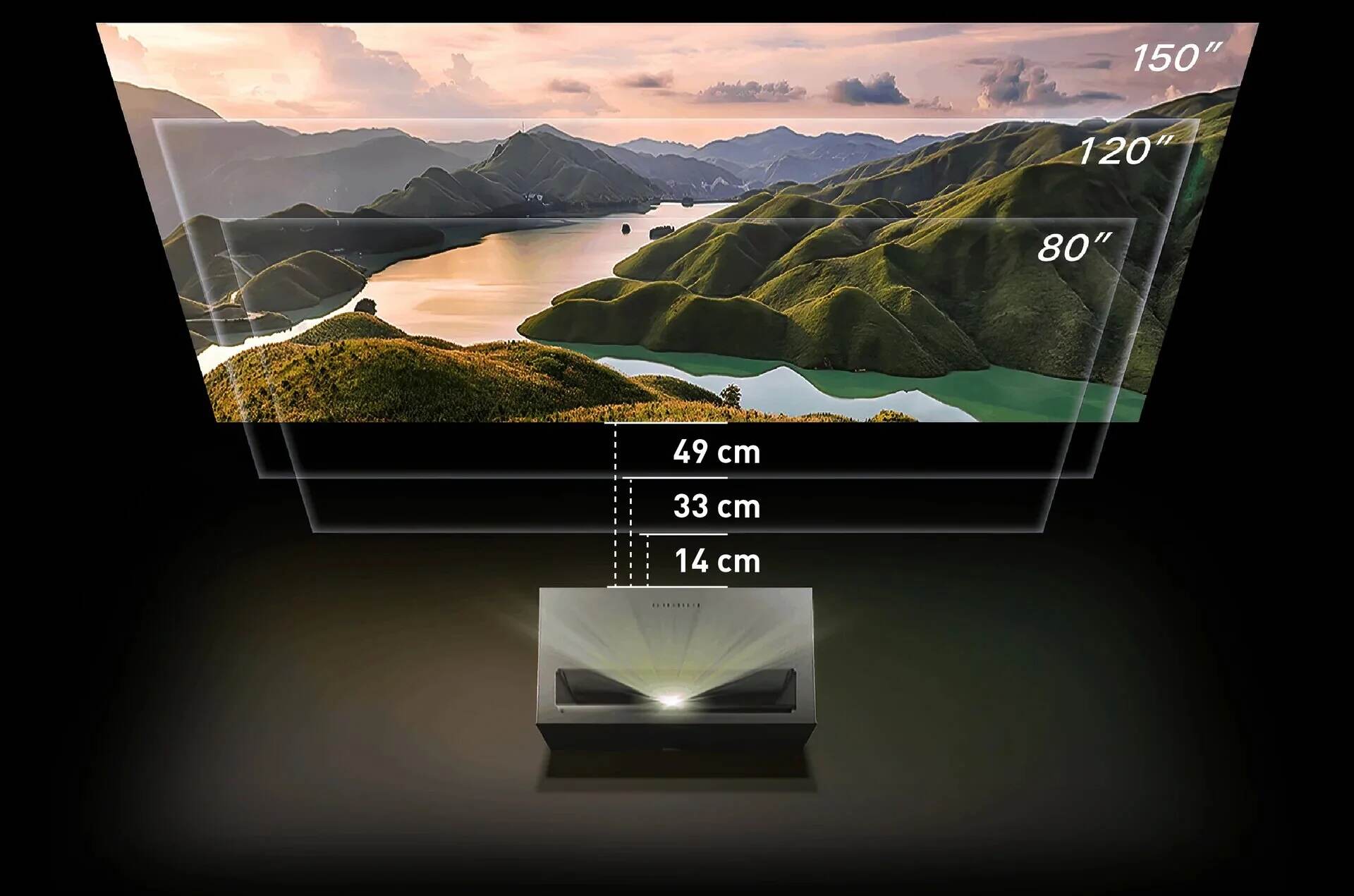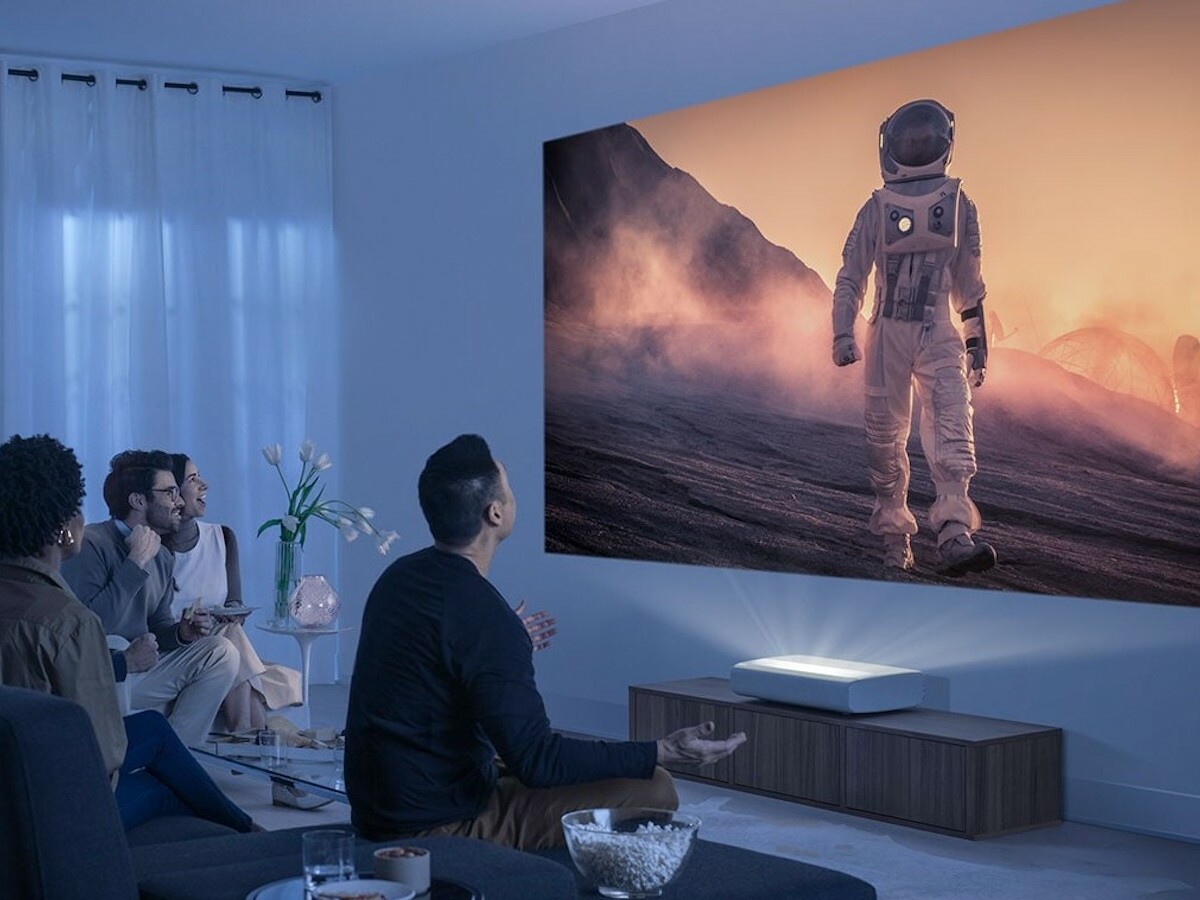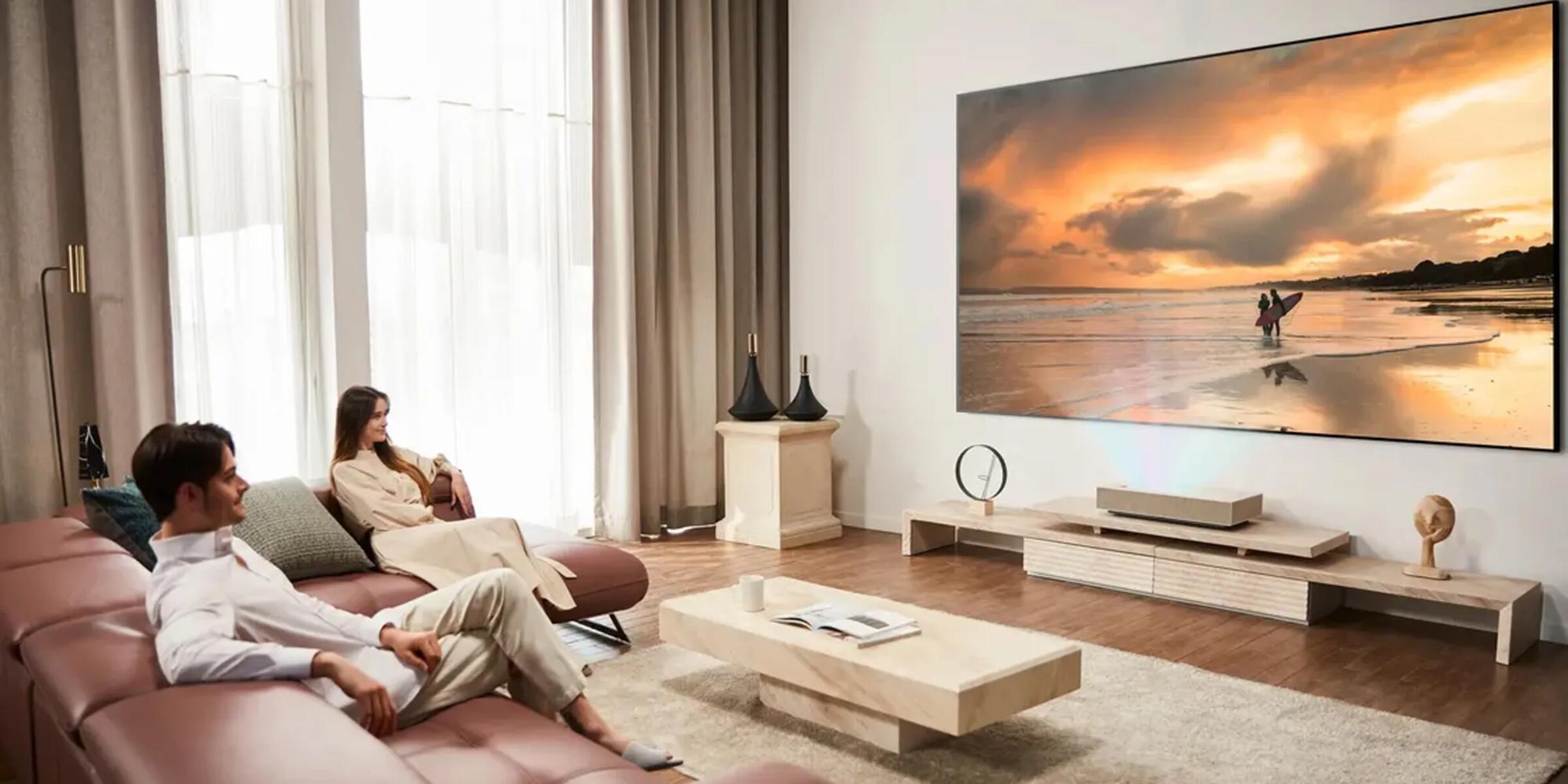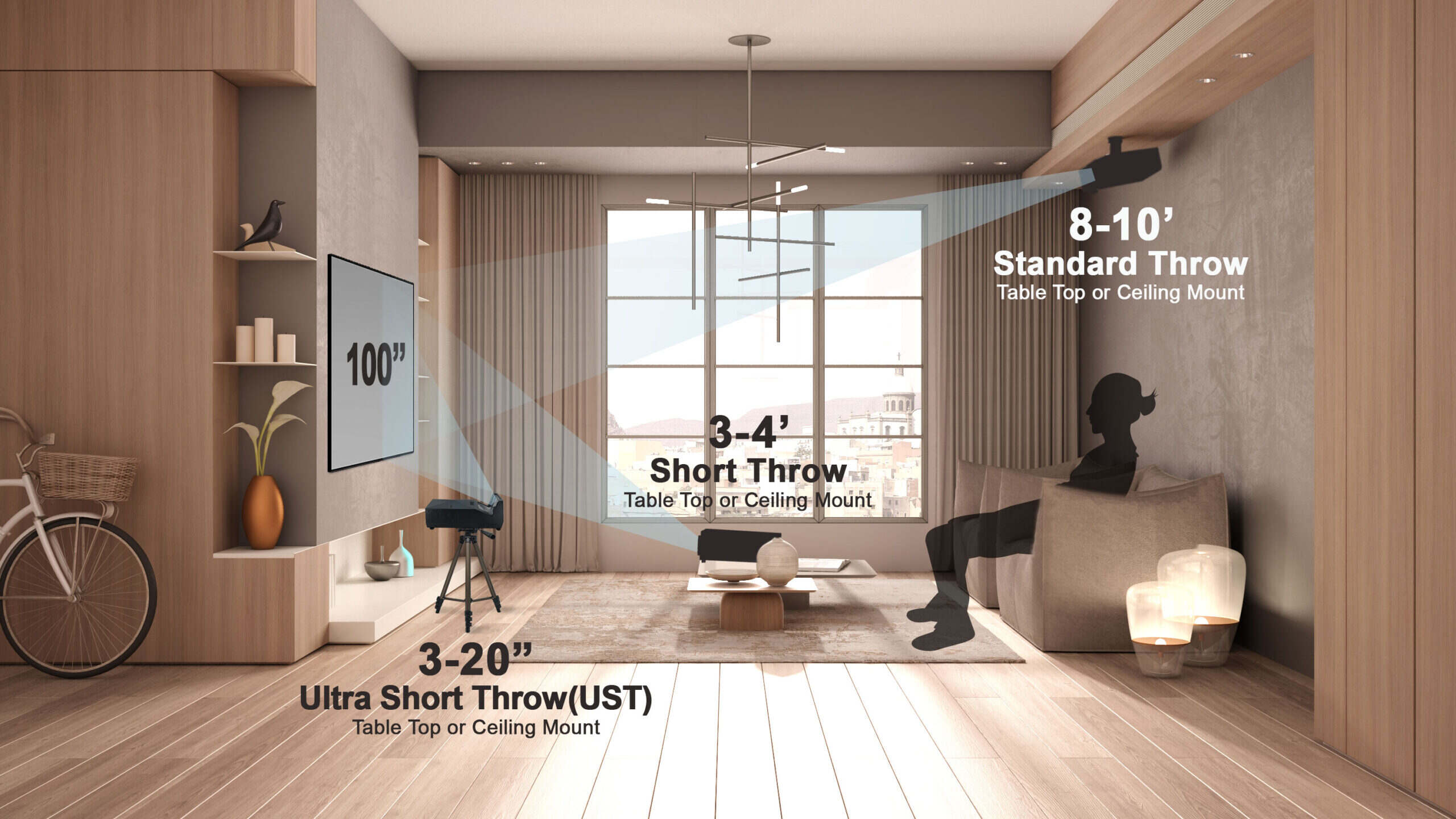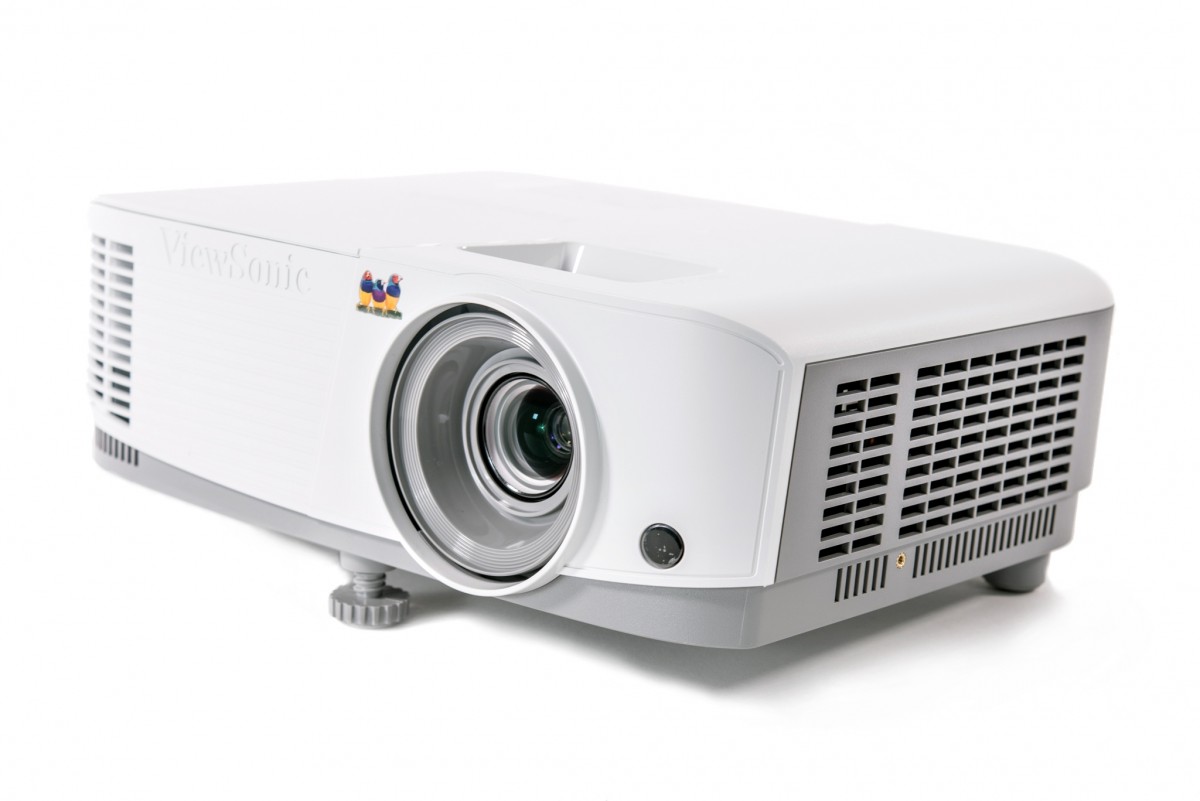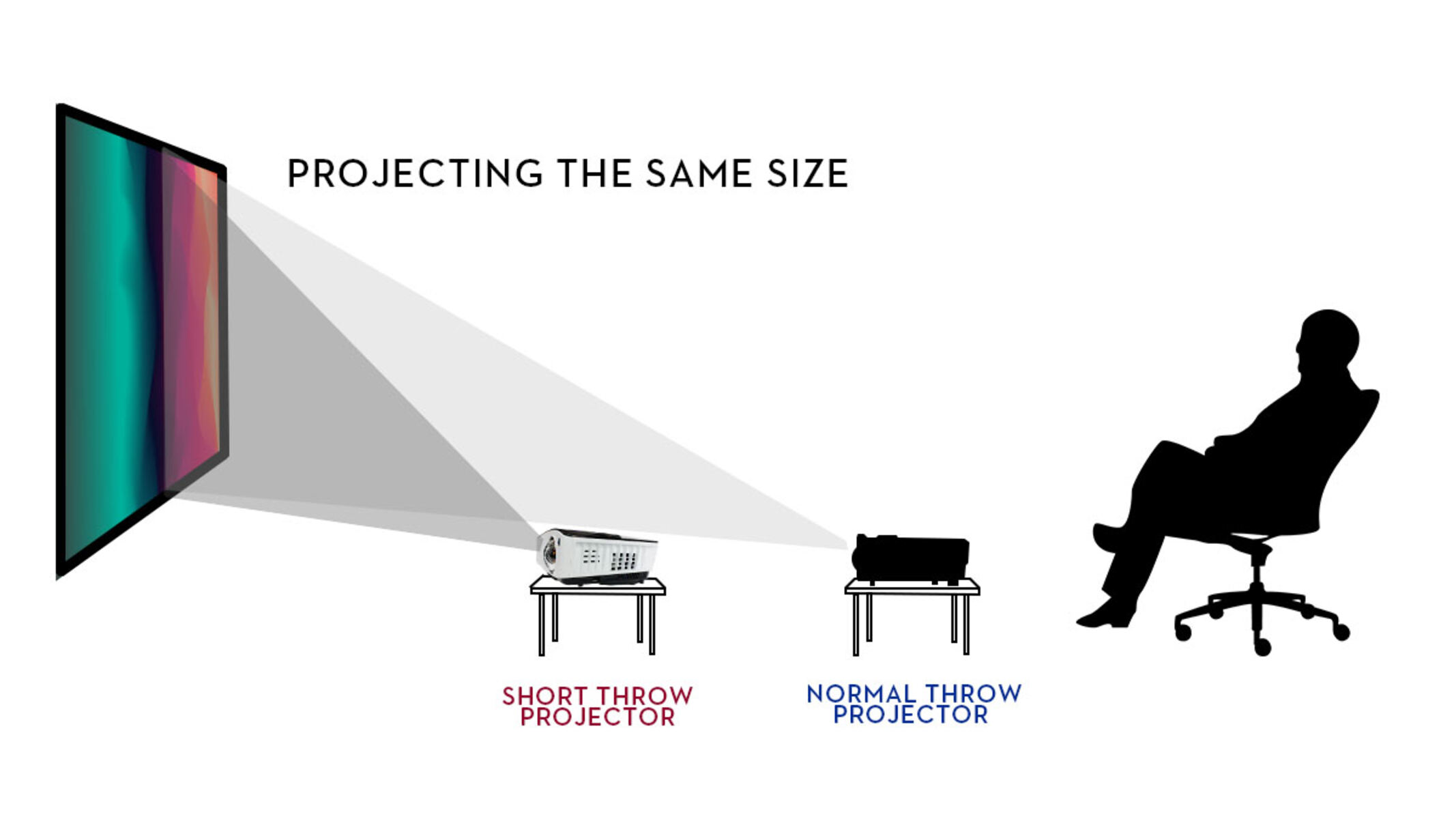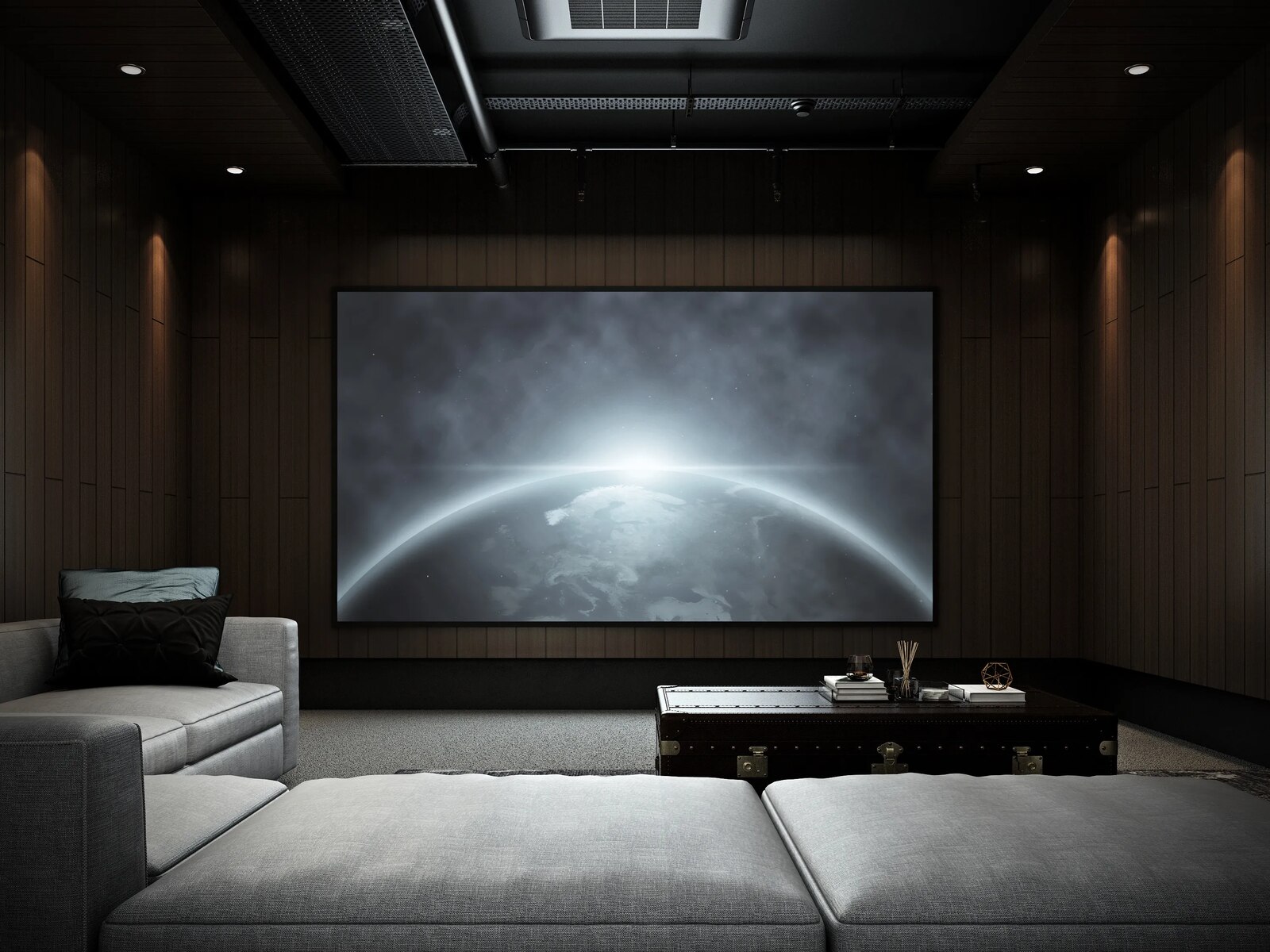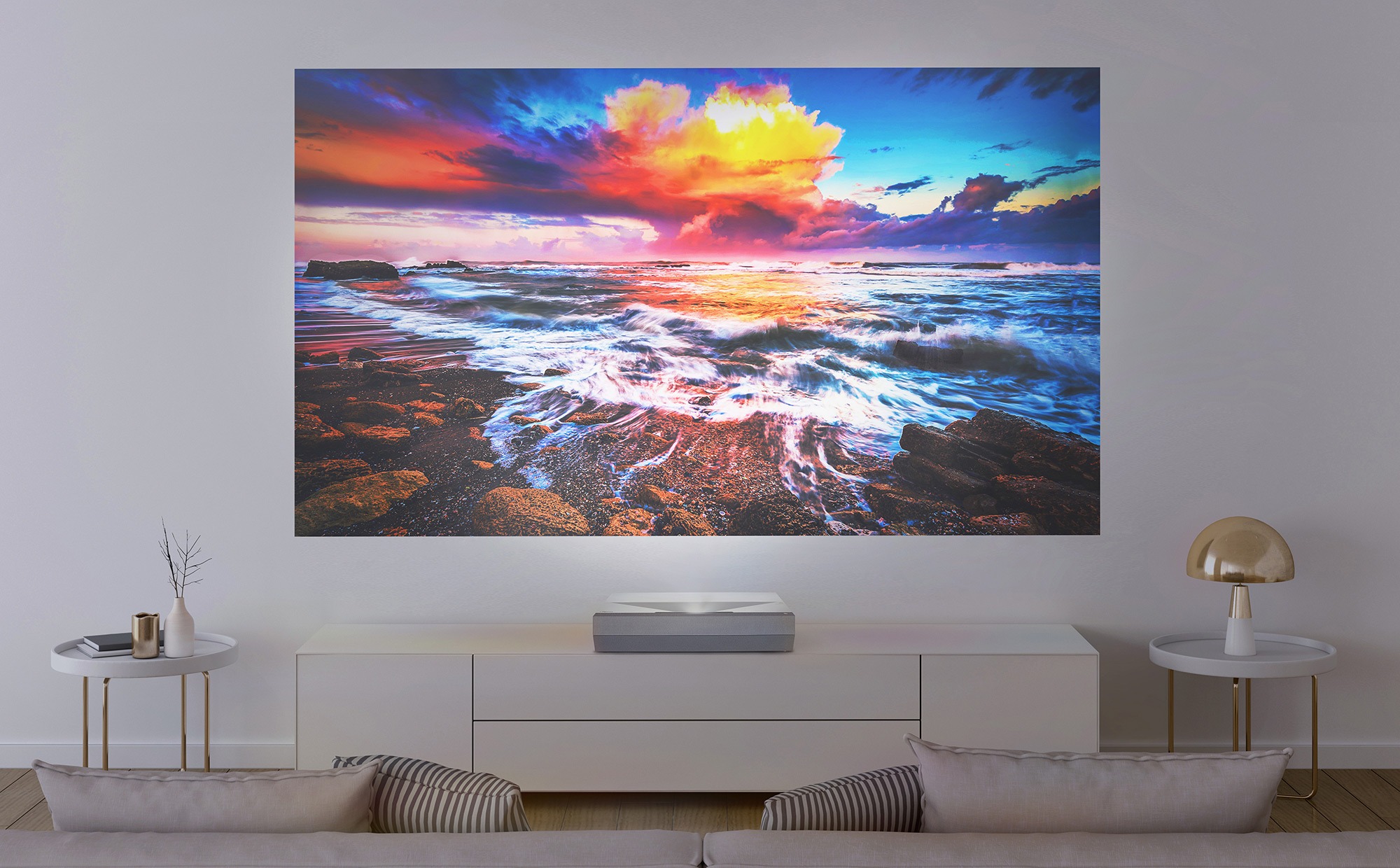Understanding Long and Short Throw Projectors
When it comes to choosing a projector for your home or office, understanding the difference between long and short throw projectors is crucial. These terms refer to the projection distance required for a projector to display an adequately sized image on the screen or wall. Let’s take a closer look at what long and short throw projectors are and how they work.
A long throw projector is designed to project a large image from a considerable distance. It requires ample space between the projector and the screen, making it ideal for larger rooms or venues with plenty of room to accommodate the required throw distance. The throw ratio of a long throw projector typically ranges from 1.5:1 to 2.5:1, meaning the projector must be placed 1.5 to 2.5 times the screen’s width away to display a properly sized image.
In contrast, a short throw projector is designed to project a large image from a short distance. These projectors can be placed much closer to the screen or wall, reducing the required space and minimizing the risk of shadows being cast on the image. Short throw projectors have a throw ratio of around 0.5:1 to 1.2:1, allowing them to project a large image from just a few feet away.
The key difference between long and short throw projectors lies in their projection angles. Long throw projectors have a wide-angle projection, whereas short throw projectors have a narrow-angle projection. This difference affects the positioning and placement of the projector in relation to the screen or wall. Long throw projectors typically require a more extended distance from the screen, while short throw projectors can be placed much closer.
Both long and short throw projectors have their advantages and suit different environments and applications. Understanding these differences will help you choose the right projector for your specific needs. In the following sections, we will explore the pros and cons of long and short throw projectors to help you make an informed decision.
How Do Long and Short Throw Projectors Work?
Long and short throw projectors work using different optical systems to project images onto a screen or wall. Understanding how they work will give you insight into their capabilities and help you make an informed decision when choosing a projector.
A long throw projector utilizes a lens system that allows it to project the image at a longer distance. It uses a combination of lenses and mirrors to focus and magnify the light from the projector lamp. The light passes through the lens assembly and projects the image onto the screen. The throw distance and image size are determined by the focal length and throw ratio of the lens system.
On the other hand, a short throw projector employs a different lens system that enables it to project the image from a closer distance. It uses wide-angle lenses and mirrors to widen the light beam, allowing it to cover a larger area at a shorter distance. The light is projected onto the screen with minimal distortion and can create a sizable image even when the projector is placed just a few feet away.
Long throw projectors are typically used in large spaces such as conference rooms, auditoriums, or outdoor venues where there is ample distance between the projector and the screen. Their ability to project a large image from a greater distance makes them suitable for situations where a larger screen size is required.
On the other hand, short throw projectors are popular for smaller rooms or environments where space is limited. They can project a large image even when placed close to the screen, making them ideal for home theaters, classrooms, and small meeting rooms. The reduced throw distance also minimizes the risk of shadows being cast on the image, ensuring a clear and immersive viewing experience.
Both long and short throw projectors utilize specialized lens systems and optics to create stunning images. Depending on your specific needs and the available space, you can choose the projector that best fits your requirements. In the next sections, we will delve into the pros and cons of long throw and short throw projectors to help you make an informed decision.
Differences Between Long and Short Throw Projectors
Long and short throw projectors have distinct differences in terms of their projection distance, positioning, and the environments for which they are most suited. Understanding these differences will help you determine which type of projector is best suited for your specific needs.
The primary difference between long and short throw projectors lies in their required throw distance. Long throw projectors require a significant distance between the projector and the screen to project a properly sized image. This distance can range from 1.5 to 2.5 times the width of the screen. In contrast, short throw projectors can be placed much closer, typically just a few feet away from the screen or wall.
Because of their longer throw distance, long throw projectors are best suited for larger spaces, such as auditoriums, conference rooms, or outdoor venues. They require ample room for the projector to be positioned at the appropriate distance without obstructing the audience’s view. Long throw projectors can project large images onto larger screens, providing a more immersive viewing experience for the audience.
Short throw projectors, with their ability to project a large image from a short distance, are perfect for smaller spaces or environments where space is a constraint. They can be placed close to the screen or wall, allowing for more flexibility in room setup and reducing the risk of shadows being cast on the image. Short throw projectors are popular choices for home theaters, classrooms, and small meeting rooms.
Another significant difference between long and short throw projectors is their projection angles. Long throw projectors have a wider projection angle, which means they can cover a larger area when placed farther away from the screen. This wider angle is advantageous for large venues where projection to a larger screen or audience is required. In contrast, short throw projectors have a narrower projection angle, allowing them to project a larger image even from close distances.
The choice between a long or short throw projector depends on various factors, including the size of the room or venue, the desired screen size, and the available space for projector placement. Understanding the differences and considering your specific requirements will help you make an informed decision when selecting the right projector for your needs.
Pros and Cons of Long Throw Projectors
Long throw projectors offer unique advantages and disadvantages that should be considered when deciding whether they are the right choice for your projection needs.
One of the main advantages of long throw projectors is their ability to project a large image onto a larger screen. This is particularly beneficial for large venues such as auditoriums or outdoor spaces where the audience needs to see the image clearly from a distance. Long throw projectors are designed to handle larger projection distances, creating a more immersive viewing experience for the audience.
Another advantage of long throw projectors is their wider projection angle. This enables them to cover a larger area when positioned farther away from the screen. It is especially useful for situations that require the projection of images to a larger audience or onto a larger screen.
Long throw projectors are also more forgiving in terms of placement. They can be positioned at a greater distance from the screen, allowing for more flexibility in room setup and reducing the risk of shadows being cast on the projected image. This makes them a good option for larger, more spacious environments.
However, long throw projectors do have some drawbacks. The main disadvantage is the need for a considerable throw distance. This requirement might be a limitation in smaller spaces or venues with limited room for projector placement. Additionally, long throw projectors may not be the best choice for situations where a smaller screen size or a close-up viewing experience is desired.
Another consideration is the cost. Long throw projectors tend to be more expensive than their short throw counterparts. This is due to the complexity of the lens system and the need for higher-quality optics to maintain image quality at longer projection distances.
Furthermore, long throw projectors may require projector mounts or ceiling installations to achieve the optimal throw distance and image size. This can add to the overall cost and complexity of the setup process.
In summary, long throw projectors are ideal for larger venues and situations where a bigger screen size and wider projection angle are necessary. They offer an immersive viewing experience and provide more flexibility in terms of projector placement. However, they may not be suitable for smaller spaces or situations that require a shorter throw distance or closer viewing experience.
Pros and Cons of Short Throw Projectors
Short throw projectors offer unique advantages and disadvantages that should be taken into consideration when selecting a projector for your specific needs.
One of the main advantages of short throw projectors is their ability to project a large image from a short distance. This makes them perfect for smaller spaces, such as home theaters or classrooms, where there may be limited room for projector placement. Short throw projectors can be positioned close to the screen or wall, ensuring a large image while minimizing the risk of shadows being cast on the projection.
Another advantage of short throw projectors is their ease of installation. With the ability to be placed just a few feet away from the screen, the setup process is simplified, and there is no need for additional mounts or complex ceiling installations. This makes short throw projectors ideal for those who want a hassle-free installation process.
Short throw projectors are also beneficial for interactive applications. When combined with touch-enabled screens or interactive whiteboards, they allow for a more engaging and interactive experience in classrooms, boardrooms, or collaborative settings.
However, there are also some drawbacks to consider when it comes to short throw projectors. One potential disadvantage is their limited throw distance. While this is an advantage for smaller spaces, it may not be suitable for larger venues where a more significant projection distance is required. Short throw projectors may not be the best choice for situations that demand a larger screen size or a wider projection angle.
In terms of cost, short throw projectors tend to be more affordable compared to long throw projectors. However, it is essential to consider your specific needs and budget when making a decision. Higher-quality short throw projectors may still come with a higher price tag, especially if they offer advanced features or enhanced image quality.
Additionally, short throw projectors may have some limitations in terms of flexibility. Their shorter projection distance may offer less flexibility in terms of room setup or audience size, particularly for larger events or venues.
In summary, short throw projectors are well-suited for smaller spaces, interactive applications, and situations where a close-up viewing experience is desired. They offer easy installation and a hassle-free setup process. However, they may not be ideal for larger venues or situations that require a longer throw distance, wider projection angle, or larger screen size.
Which Projector Should You Choose?
Choosing between a long throw and a short throw projector ultimately depends on your specific needs, the size of the space, and your intended usage. Consider the following factors to help guide your decision:
Room Size: Assess the size of the room or venue where the projector will be used. For larger spaces with ample throw distance, a long throw projector may be the better option. Conversely, if you have limited space or a smaller room, a short throw projector can provide a large image from a close distance.
Image Size: Determine the desired screen size for your projection needs. If you require a larger screen or want to project to a larger audience, a long throw projector is likely the best choice. However, if a smaller screen size is sufficient, or if a close-up viewing experience is preferred, a short throw projector can accommodate these needs.
Installation Flexibility: Consider the flexibility and ease of installation. Short throw projectors often provide a more straightforward installation process, as they can be placed close to the screen without the need for additional mounts or complex setups. Long throw projectors may require more planning and adjustments to achieve the optimal throw distance.
Budget: Evaluate your budget and choose a projector that aligns with your financial resources. Short throw projectors tend to be more affordable compared to long throw projectors, but there are still variations in pricing based on features and image quality. Determine the balance between your desired features and your budget limitations.
Intended Usage: Consider how you plan to use the projector. If you require interactivity or touch-enabled capabilities, short throw projectors may be a better fit. For larger venues or situations with a wide projection angle, a long throw projector can provide the necessary coverage.
By carefully considering these factors, you can make an informed decision about whether a long throw or a short throw projector is the most suitable for your needs. It’s essential to find the right balance between image size, room size, installation flexibility, budget constraints, and intended usage to ensure the best projection experience possible.
Tips for Setting Up a Long or Short Throw Projector
Whether you have chosen a long throw or a short throw projector, proper setup is crucial to ensure optimal performance and image quality. Here are some tips to help you set up your projector effectively:
1. Measure the Throw Distance: Determine the ideal throw distance for your projector based on the screen size and the projector’s specifications. This will help you position the projector at the correct distance from the screen or wall for the desired image size.
2. Use a Stable Surface: Ensure that the surface you place the projector on is stable and level. Avoid placing the projector on uneven or vibrating surfaces as this can cause image distortion or vibrations in the projection.
3. Adjust Keystone Correction: Both long throw and short throw projectors have keystone correction settings to adjust image distortion caused by the projector’s angle. Make use of these settings to ensure a straight and proportional image.
4. Consider Projection Angle: Pay attention to the projection angle of your projector. Ensure that it is aligned with the screen or wall, and adjust the projector’s tilt or use adjustable mounts if necessary to achieve the ideal projection angle.
5. Take Ambient Lighting into Account: Consider the amount of ambient lighting in the room where the projector will be used. Dimming or controlling the lighting can significantly enhance image quality and improve the overall viewing experience.
6. Utilize Proper Ventilation: Ensure that the projector has proper ventilation to prevent overheating. Place the projector in a location where there is sufficient airflow and ensure that the vents are not blocked.
7. Connect and Position Audio Output: If you are using external audio equipment, connect it to the projector and position the speakers appropriately for optimal sound quality. This is particularly important in larger venues or when setting up a home theater system.
8. Fine-Tune Image Settings: Take advantage of the projector’s image adjustment settings to fine-tune the picture quality according to your preferences. Adjust brightness, contrast, color temperature, and other settings to achieve the desired image quality.
9. Regular Maintenance: Keep the projector clean and perform regular maintenance to ensure longevity and optimal performance. Clean the lens and filters as recommended by the manufacturer and follow any maintenance guidelines provided in the user manual.
By following these tips, you can ensure a smooth and effective setup of your long or short throw projector. Take your time to carefully position and calibrate the projector to achieve the best image quality and make the most out of your projection experience.
Conclusion
Choosing between a long throw and a short throw projector comes down to understanding your specific needs, the size of the space, and the desired projection setup. Both types of projectors have their own advantages and considerations.
Long throw projectors excel in larger venues, providing a more immersive viewing experience with their ability to project a large image onto a bigger screen. They offer a wider projection angle and are well-suited for situations that require a greater throw distance.
On the other hand, short throw projectors are ideal for smaller spaces, allowing for a large projection size from a close distance. They offer easier installation, reduced risk of shadows, and can be more budget-friendly. Short throw projectors are ideal for interactive setups and close-up viewing experiences.
When making a decision, consider factors such as room size, desired screen size, installation flexibility, budget, and intended usage. This will help you determine whether a long throw or a short throw projector is best suited for your specific needs.
Remember to carefully set up your chosen projector, considering throw distance, image alignment, ventilation, ambient lighting, and audio output. Regular maintenance and calibration will ensure optimal performance and longevity.
With the right choices and careful setup, you can create a remarkable projection experience that meets your requirements and provides outstanding image quality. Whether you choose a long throw or a short throw projector, you can enjoy the benefits of high-quality projection for your home theater, classroom, meeting room, or any other environment.







